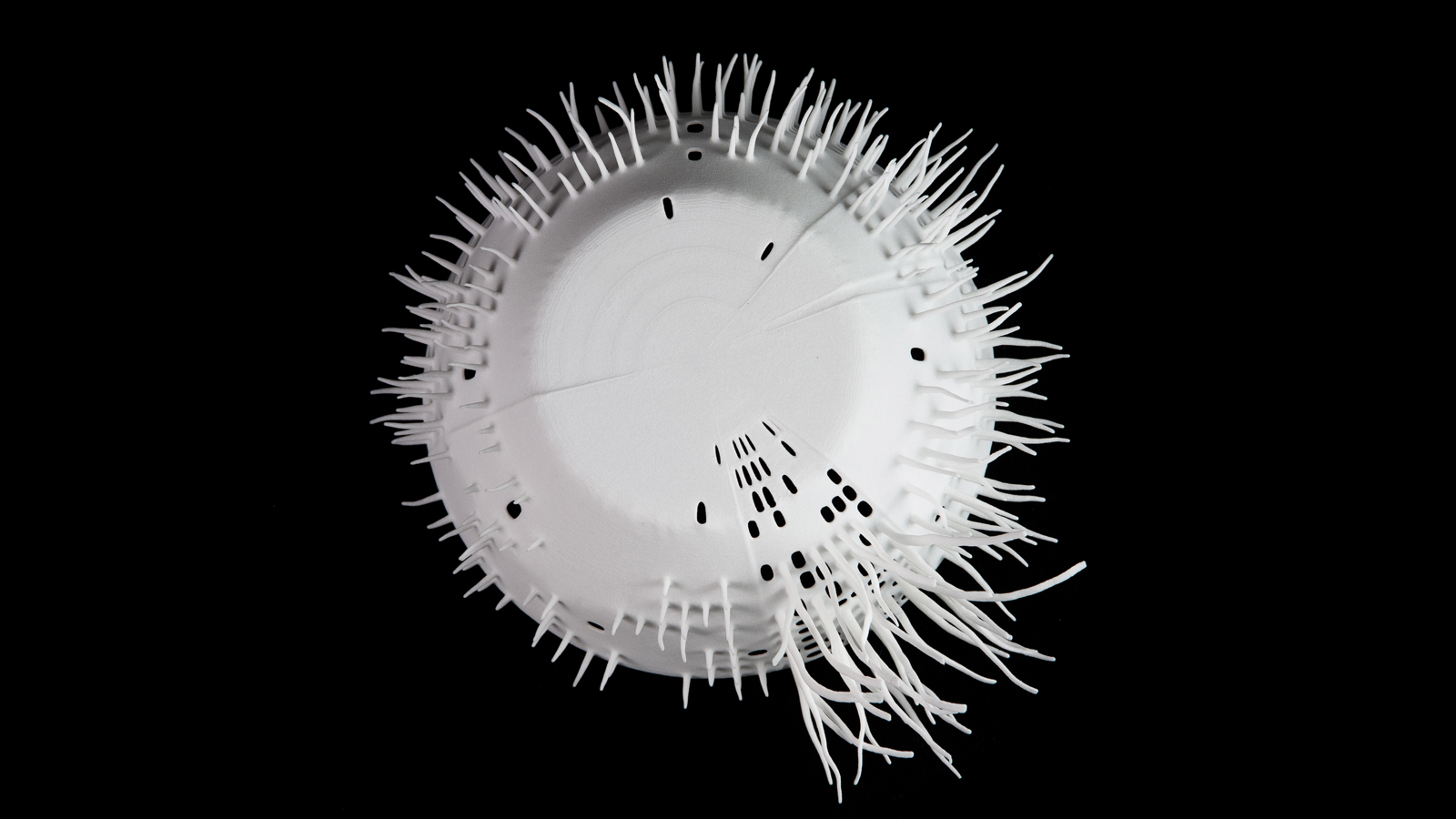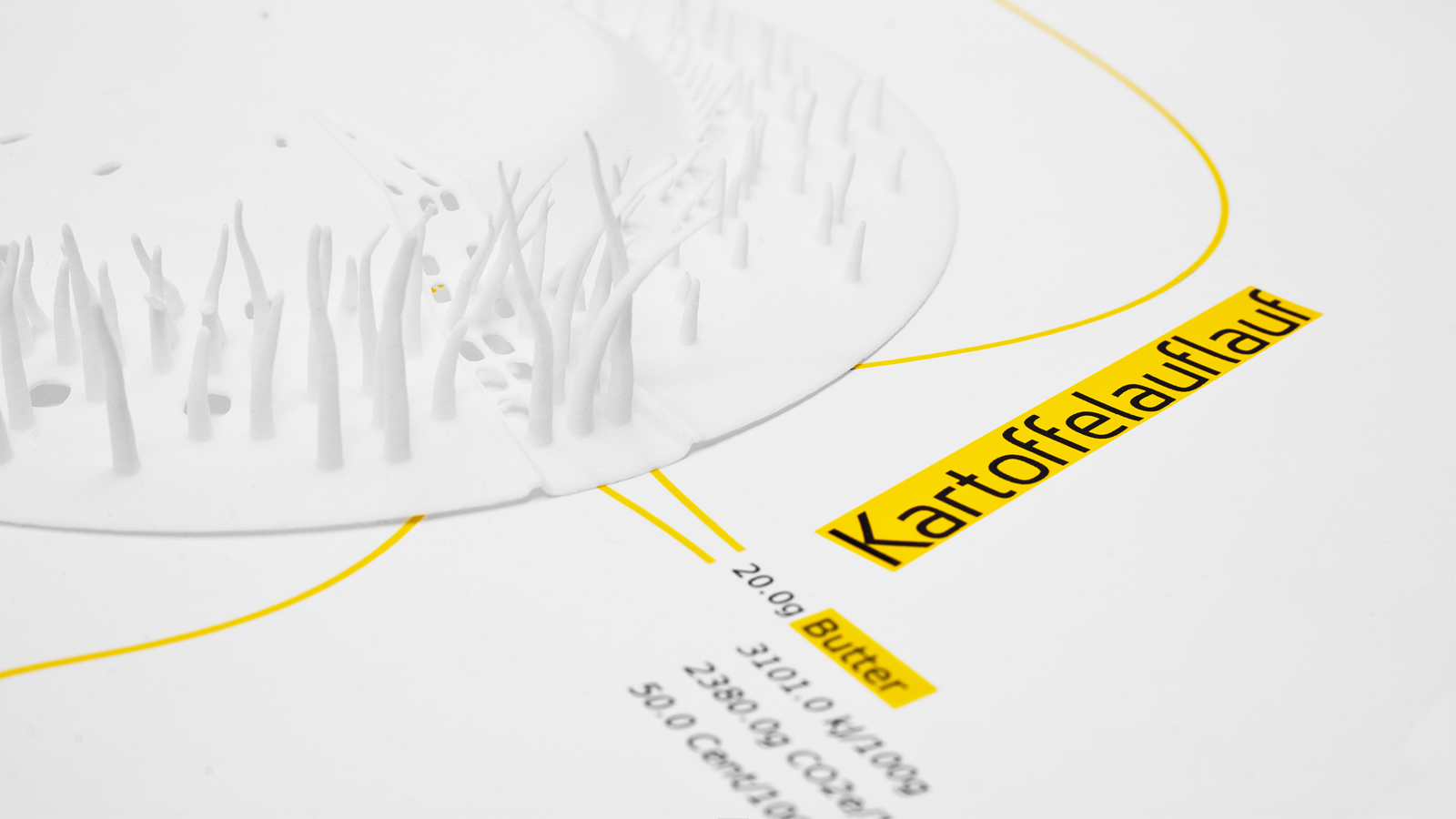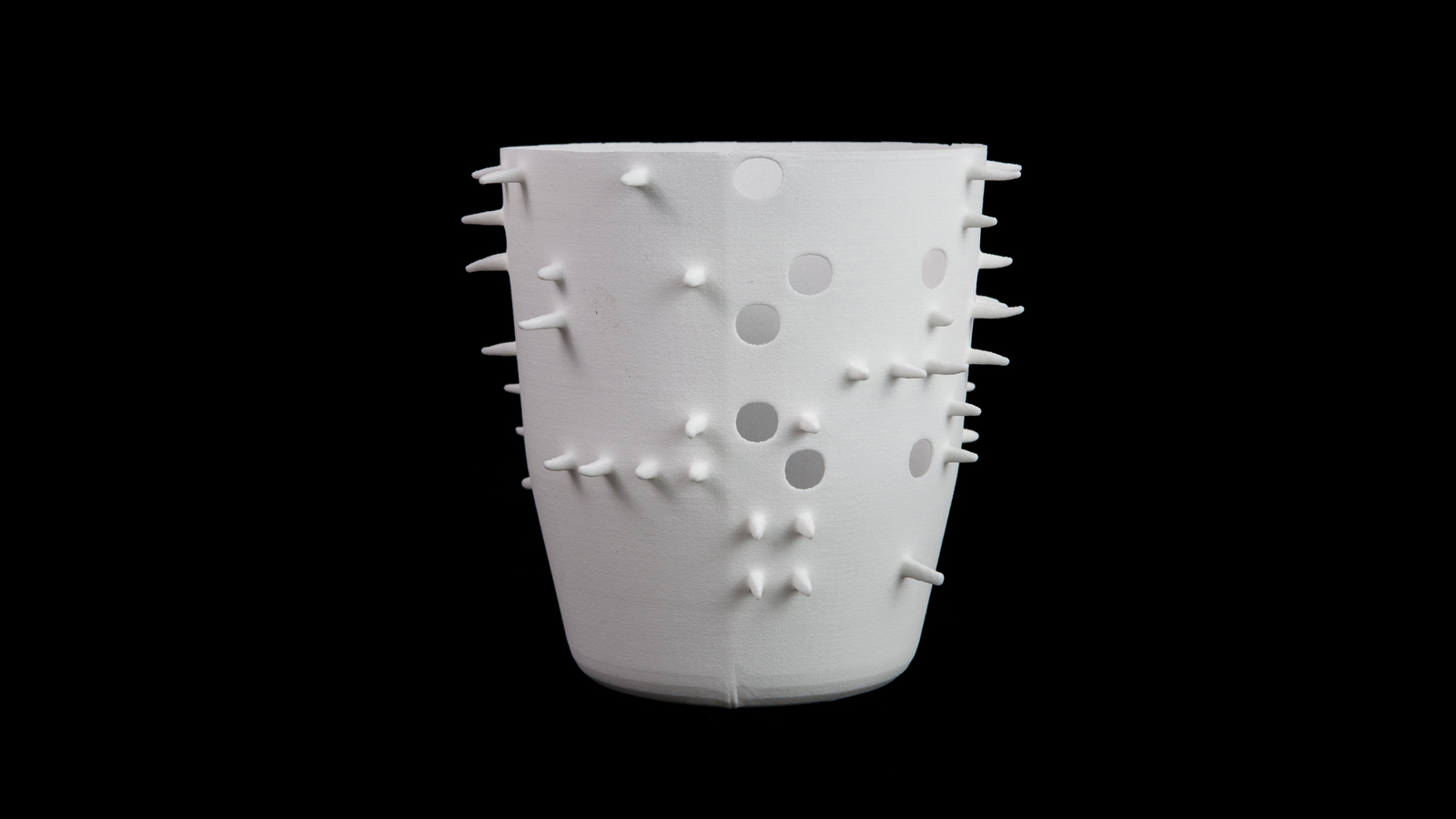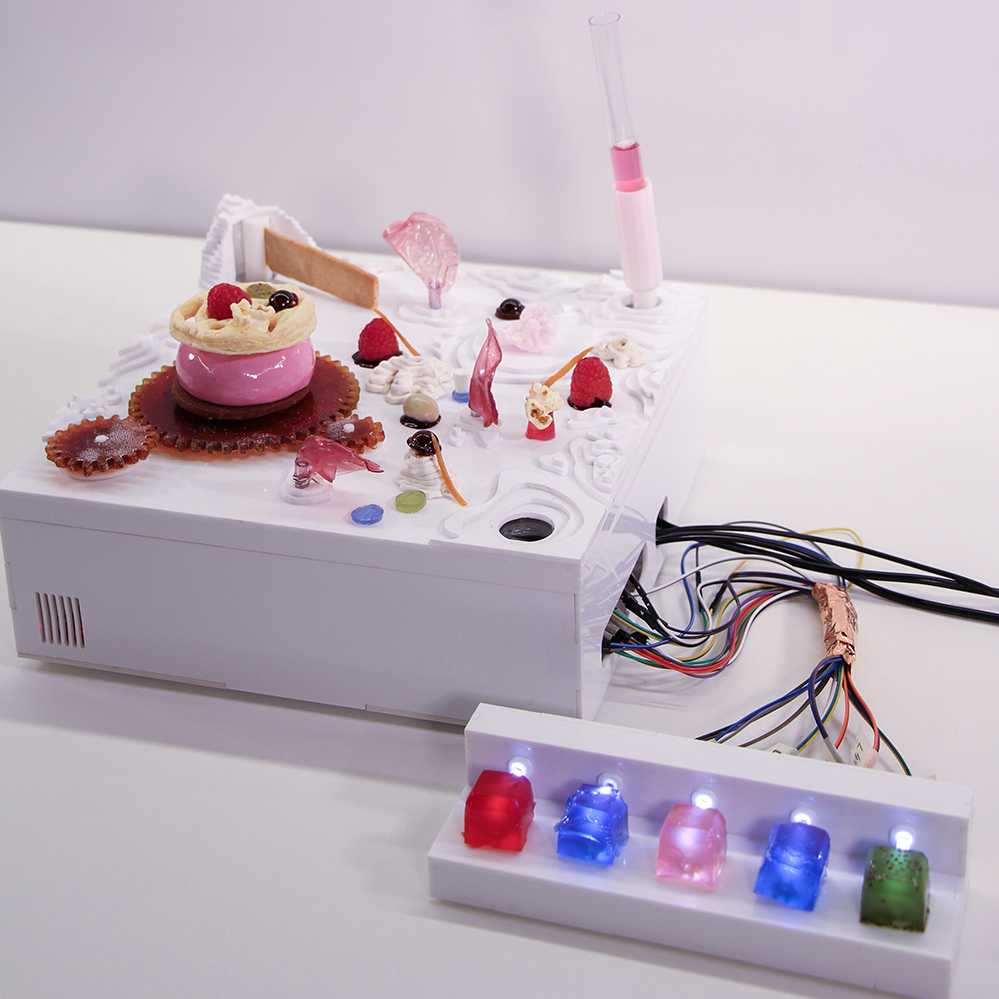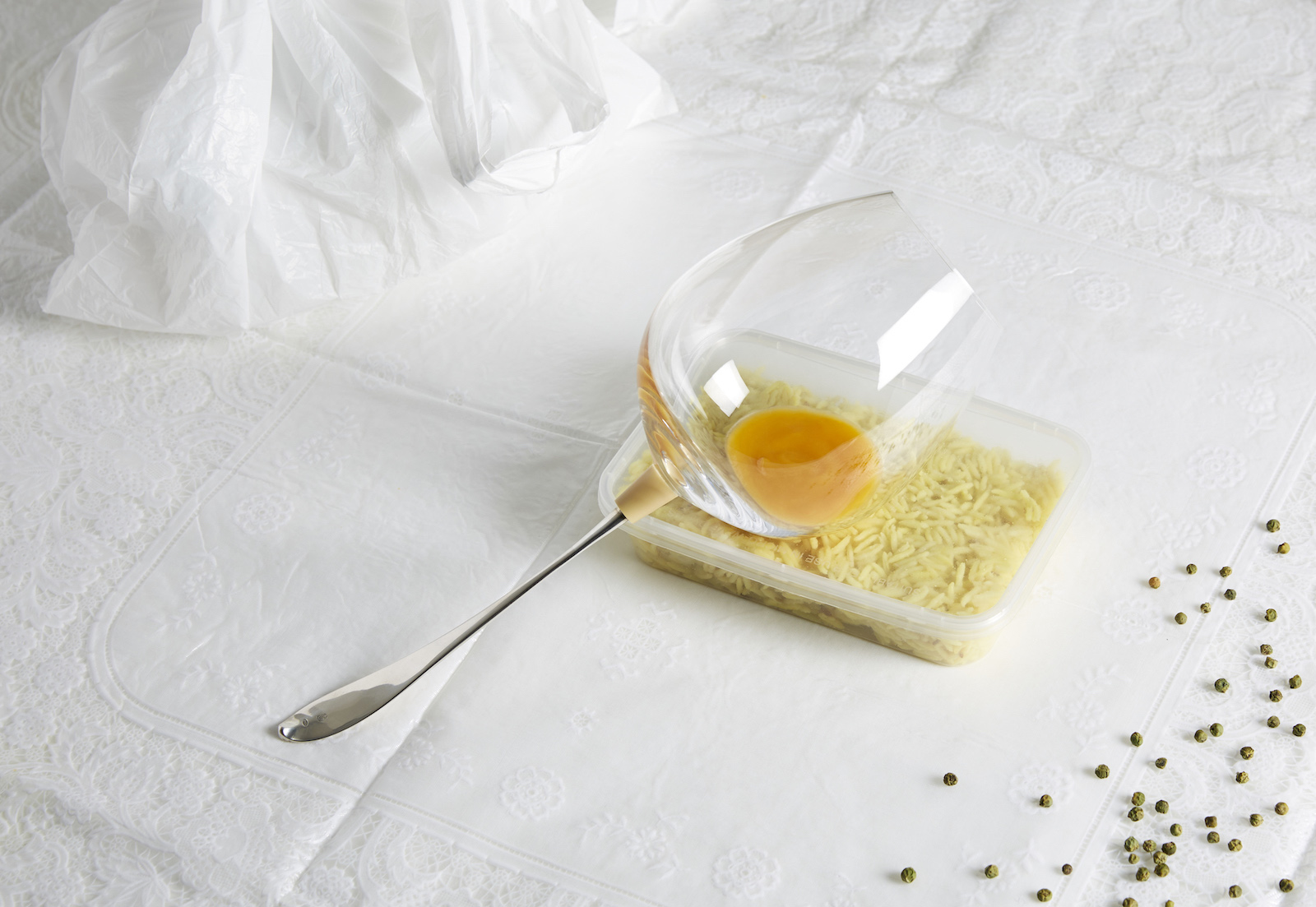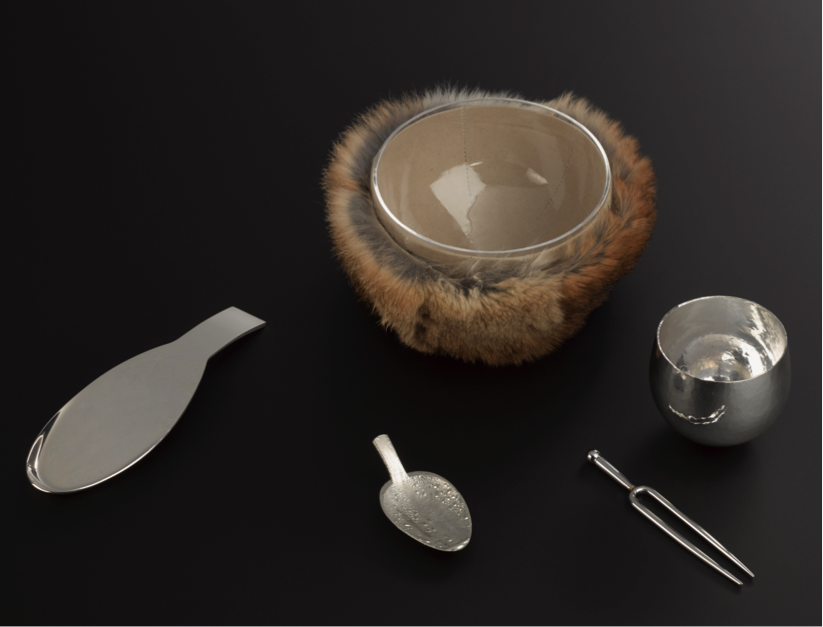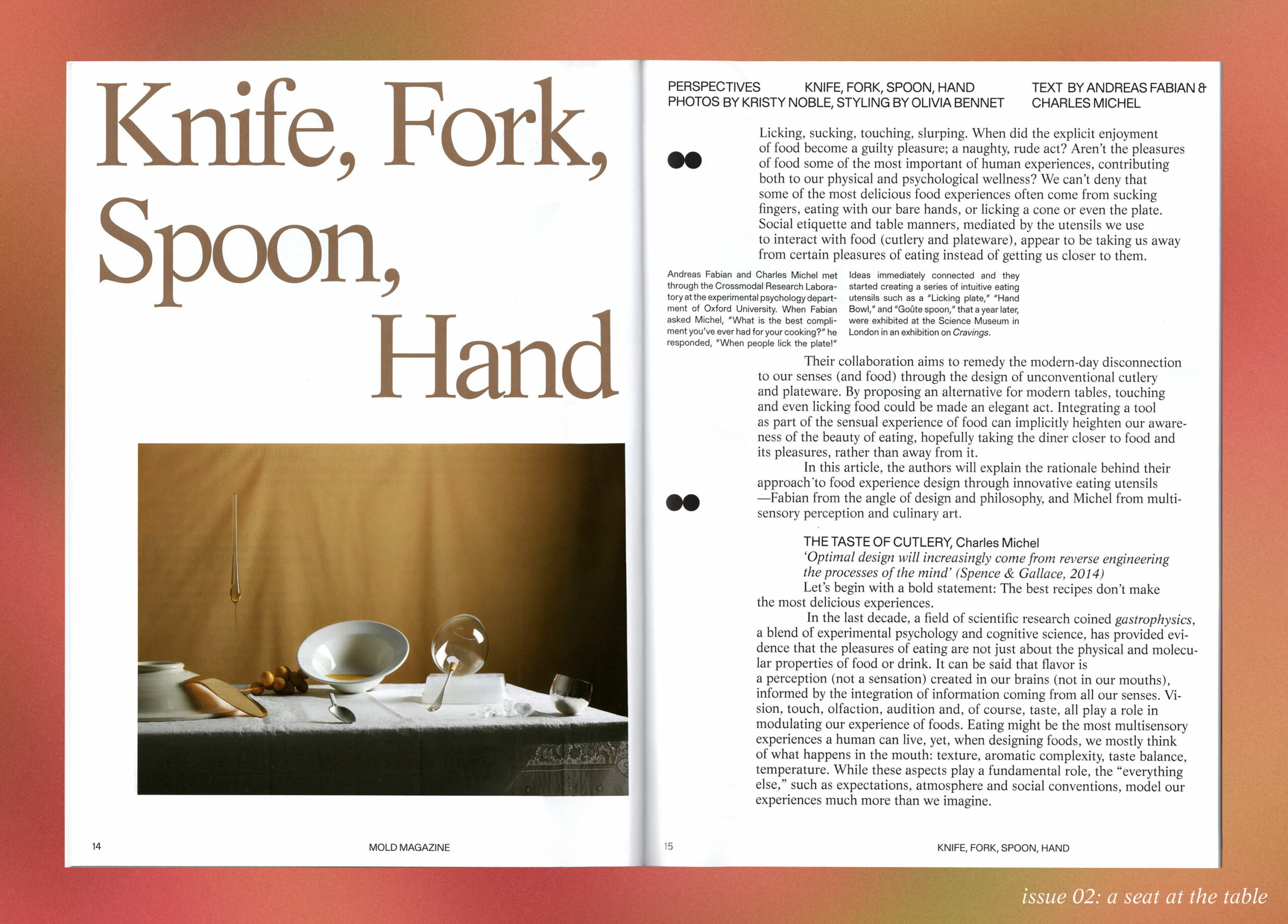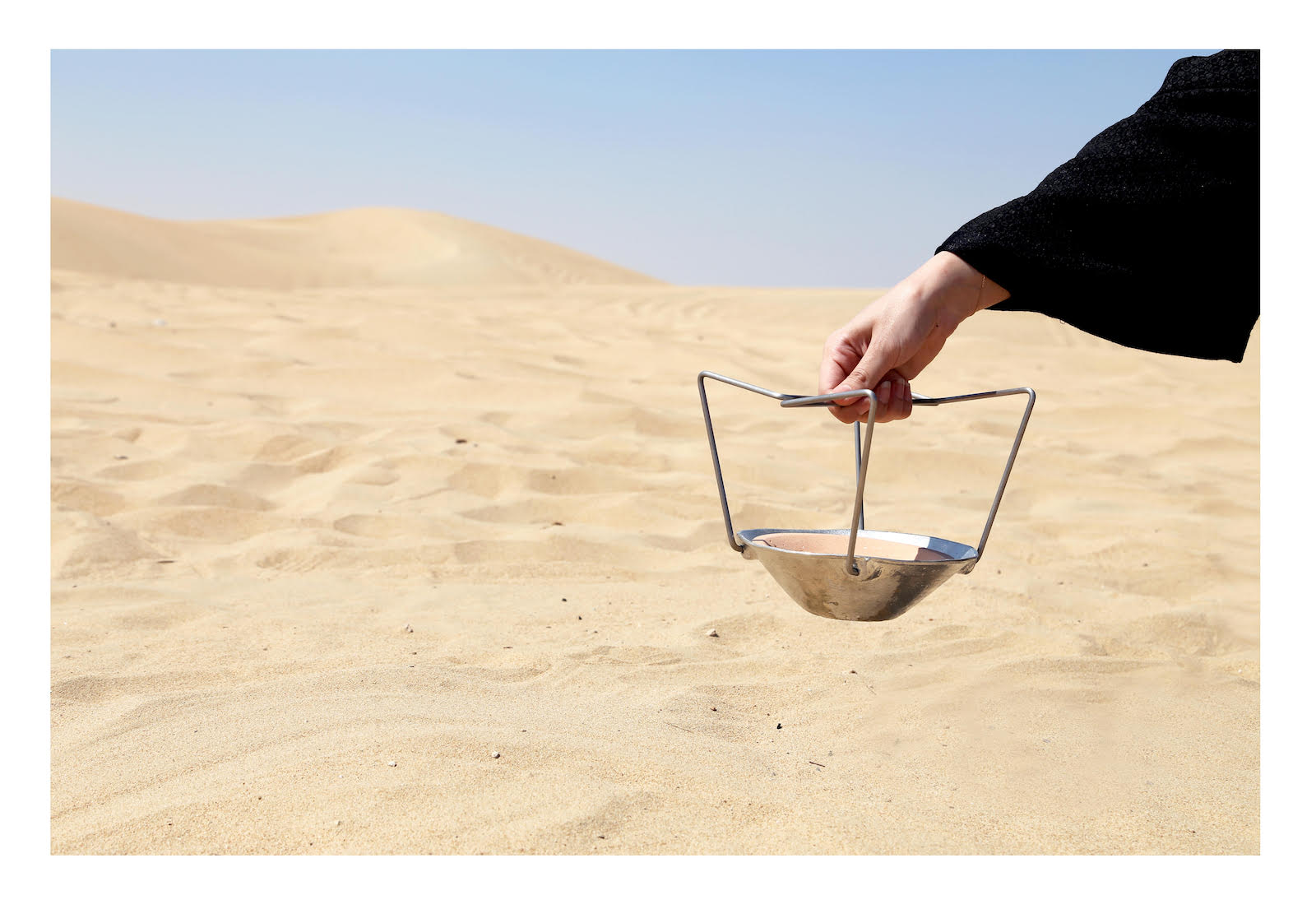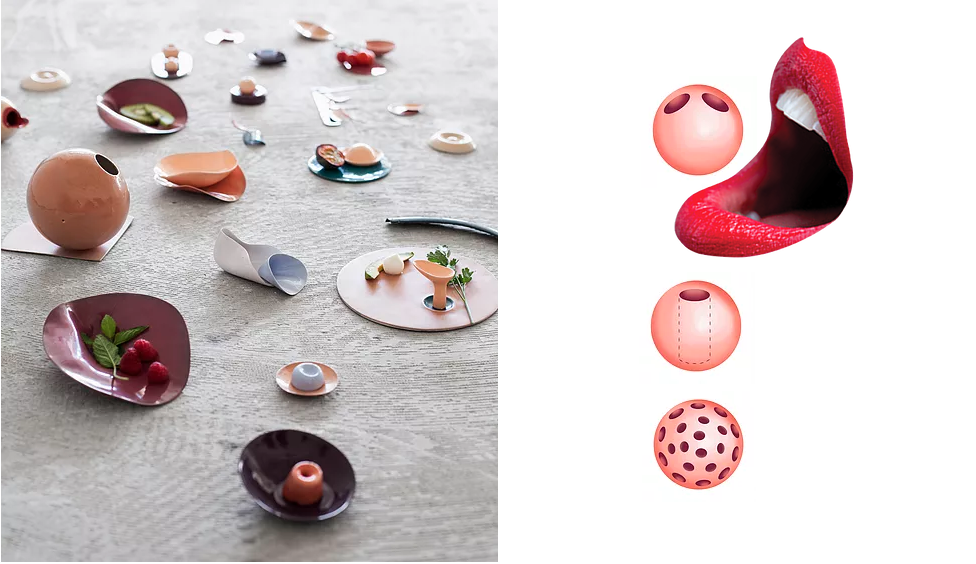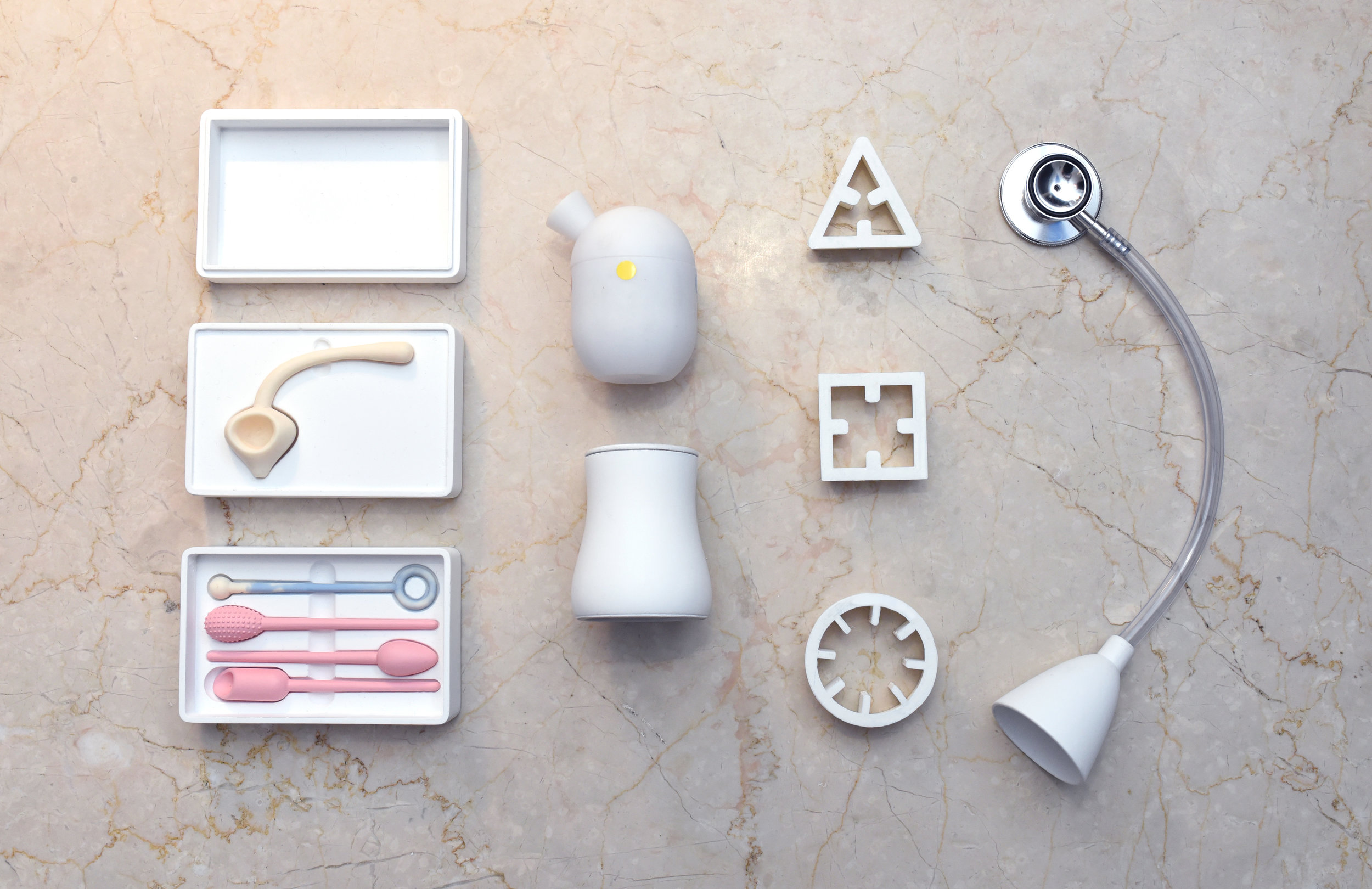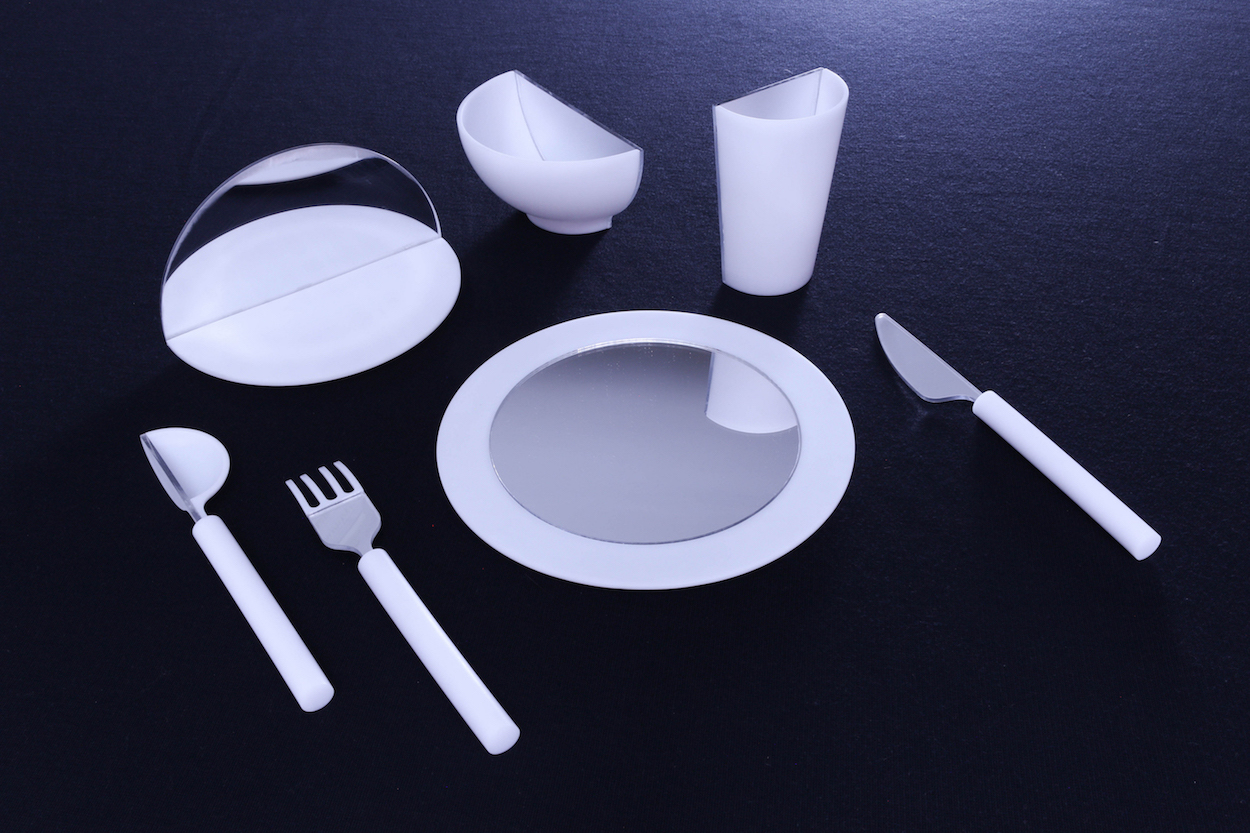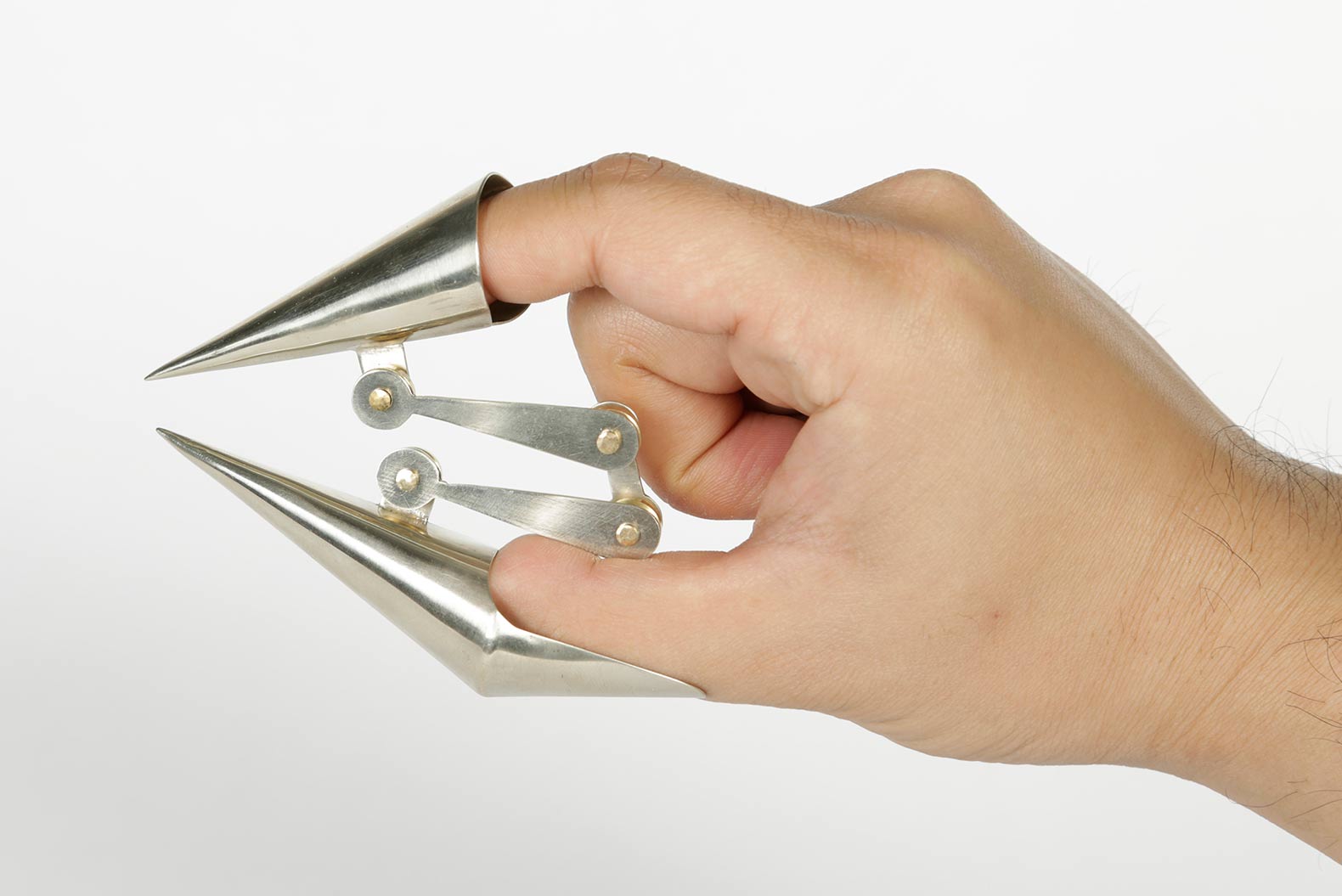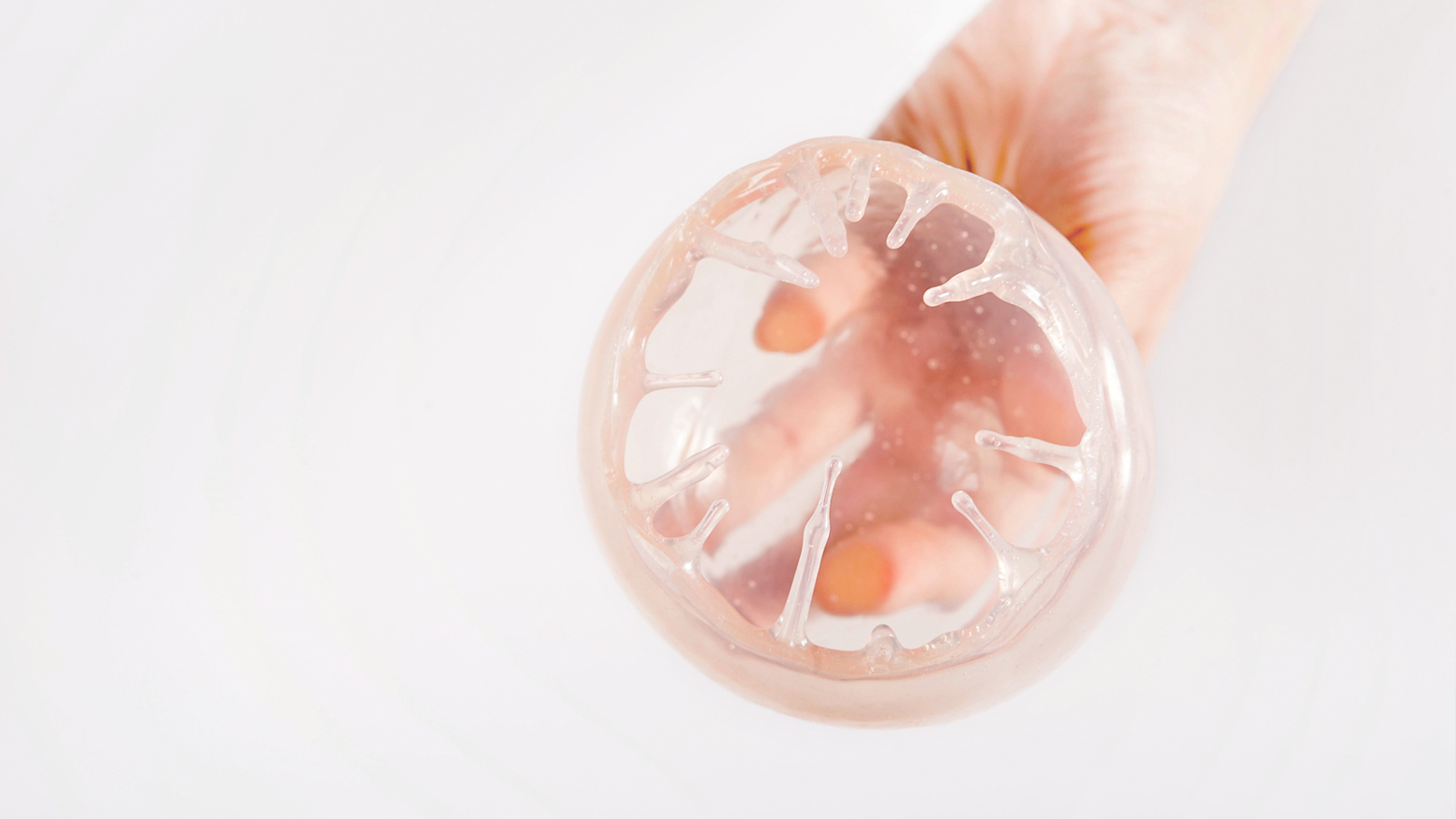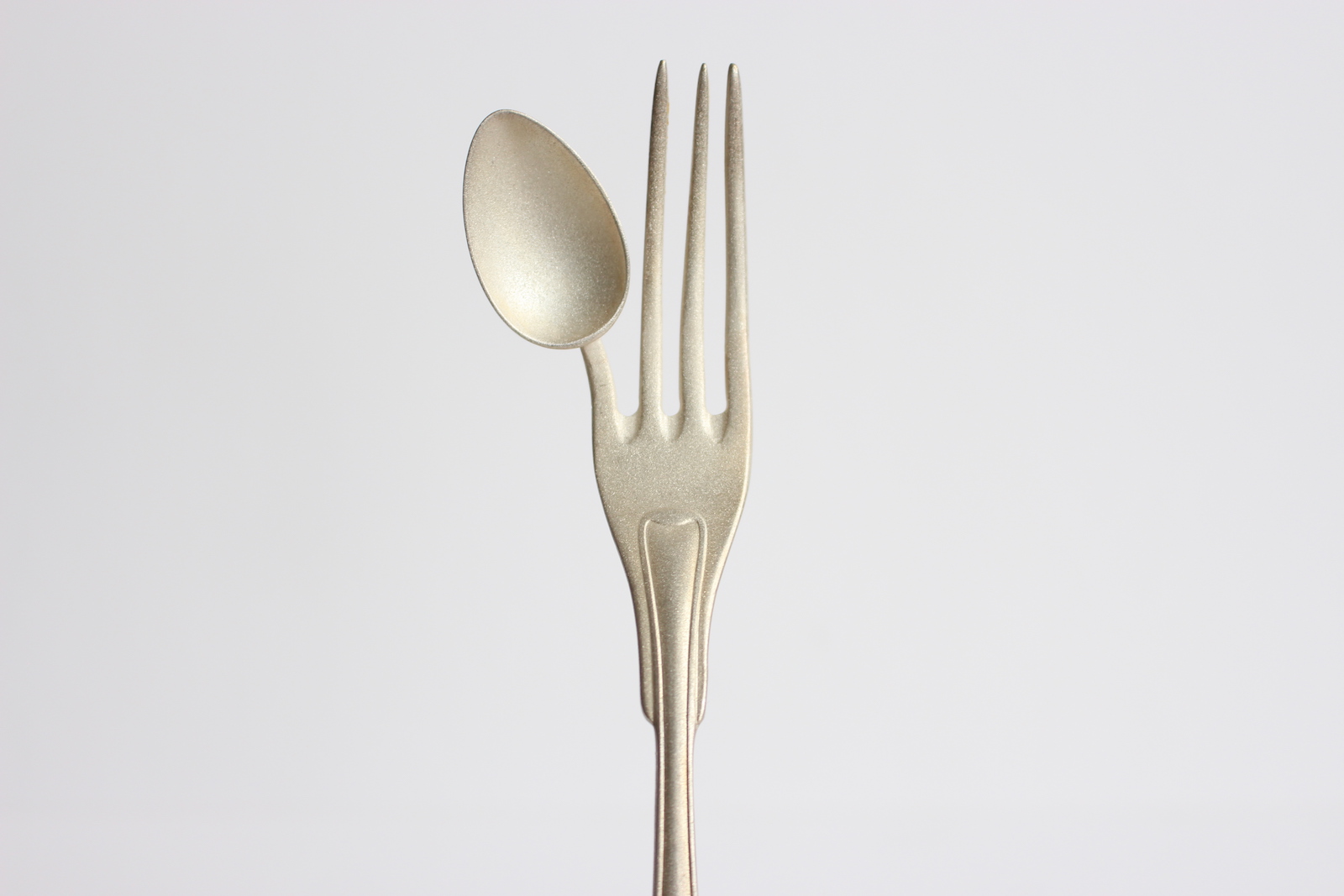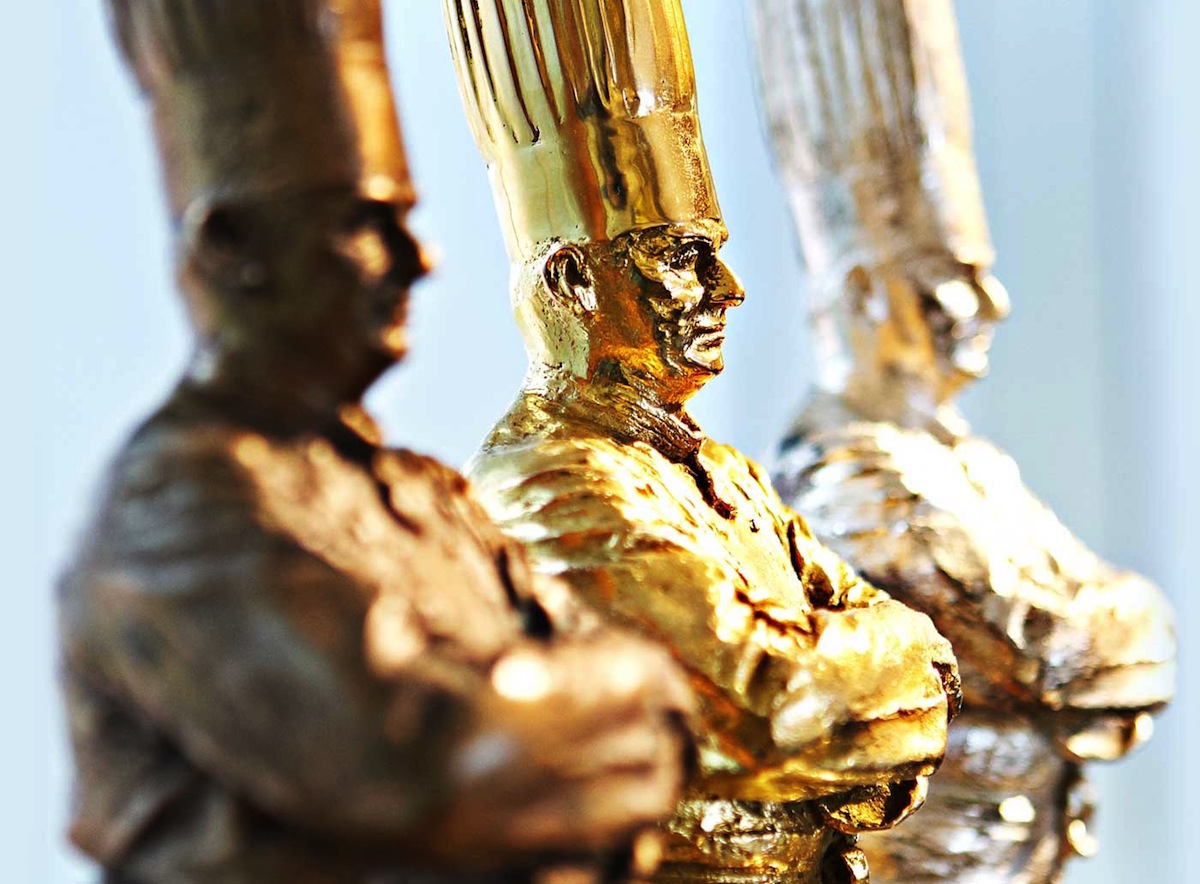Johanna Spath and Johannes Tsopanides’ project InfObjects is a three-dimensional information visualization that transforms food data into physical shapes.
The ingredients of several dishes have been analyzed for energy content, CO2 equivalent and price: A high content of energy causes the growth of small roots on the outer surface of the object. The CO2 equivalent of a dish is visualized by the appearance of ‘ozone holes’ that indicate how much greenhouse gas has been produced during breeding and processing of a single edible.
The price of an ingredient has been illustrated by rising the edge of a segment in relation to the value. The values have a direct impact on the shape and function of a set of tableware, consisting of a plate, a bowl and a mug. The information is made tangible through these objects via Rapid Manufacturing. The InfObject products are not intended to be objects of utility.
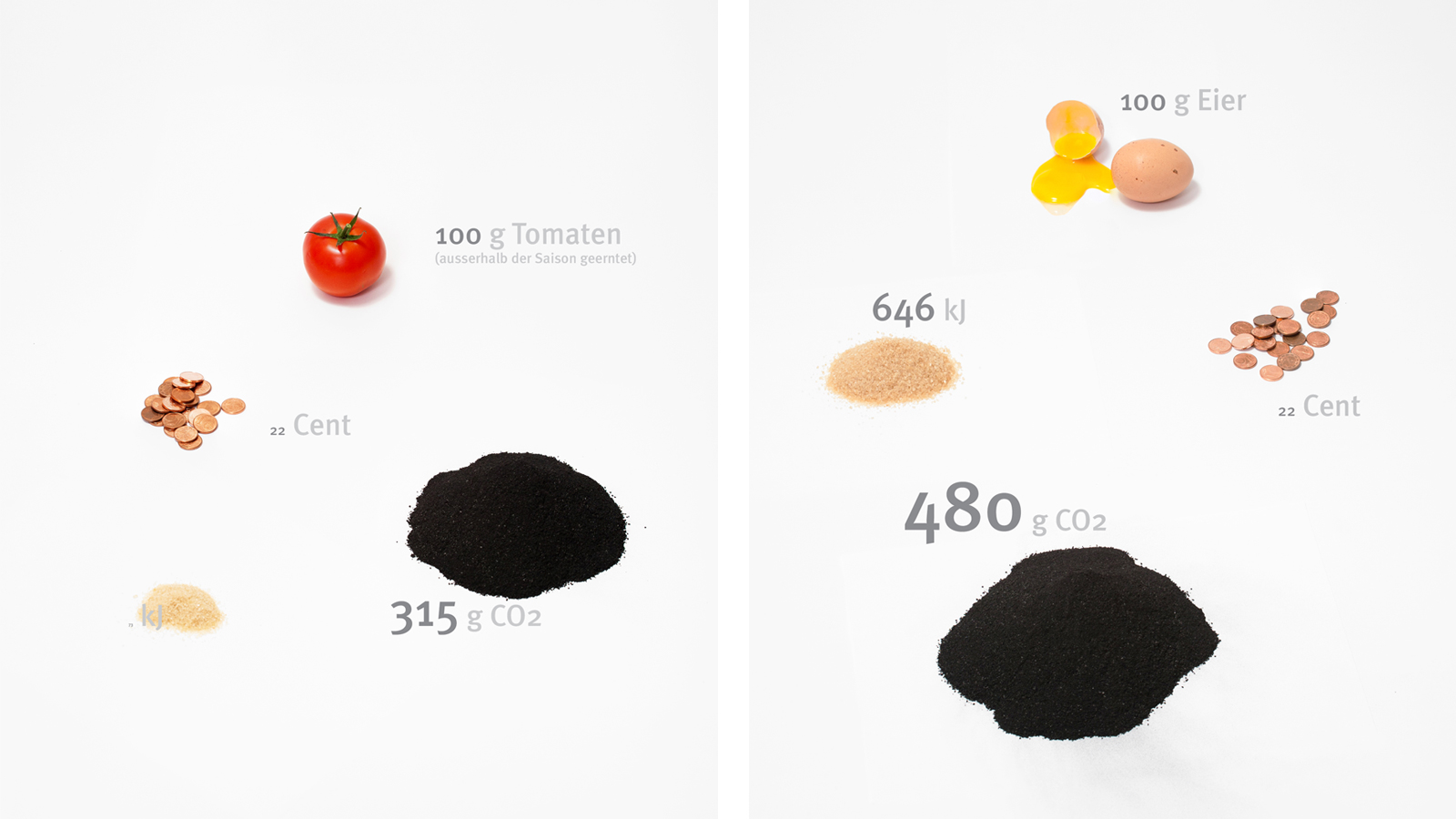
Instead, they have the function of raising awareness on the topic of how food is produced and consumed. They could be used, for example, within the context of an informational campaign. Johanna and Johannes coded this design with Processing and the final objects are made from lasersintered polyamide.
This project is featured in the forthcoming book Food Futures: Sensory Explorations in Food Design co-edited by Gemma Warriner and Kate Sweetapple out on Promopress May 2017. Follow @gemmawarriner for updates or pre-order your copy today.
